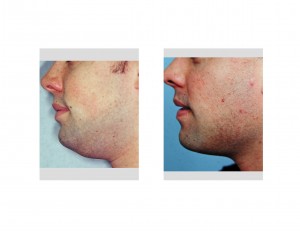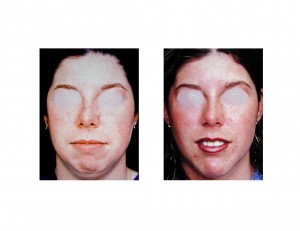It is not uncommon to hear a patient’s concern about their chubby or ‘fat face’. For some of these patients their face matches their body habitus and some significant weight loss will do wonders for those concerns. But there are people who do have a chubby face that are not necessarily significantly overweight and they may seek a plastic surgery consult to see what their options are.
The chubby face differs from other facial types in that the entire face appears full. From the cheeks down to the neck, the face assumes a definite round shape. Patients with a chubby face will often complain that the shape of their face makes them appear heavier than their body really is.
There are numerous non-surgical facial fat reduction methods that are marketed and sold. I can not comment on whether these work or are effective as they are not used in my Indianapolis plastic surgery practice. But should you try them and find them unsatisfactory, you can consider the following surgical options.
Almost all chubby face patients have thicker and elastic skin. This is a double-edged anatomic consideration. Such skin has the ability to shrink and contract (snapback if you will) which is good for getting better contours, particularly in the neck. Conversely, thick skin is also heavy and is prone to prolonged swelling.

There are no other fat areas of the face that can be effectively reduced. While significant changes can be made, for example, through a superficial parotidectomy and submandibular gland removals, these are extreme procedures which are not justifiable for cosmetic changes. Attention must be turned to bringing out facial prominences to aesthetically work in the opposite direction.

A rhinoplasty with dorsal augmentation and tip narrowing can help make the face look thinner by an optical illusion effect. Thinning of the nose is the one procedure that affects the central face whose appearance is not based on how much fat is present. Patients with chubby faces rarely have a narrow nose or a nose with a high dorsum. Usually they have a broader dorsum with a wider tip to their noses.
To change the appearance of the chubby face, multiple soft and hard tissues procedures are needed. These can include neck and cheek fat removal, blepharoplasty, and facial bone prominence highlighting. Piecing together these procedures into an effective facial surgery plan is as much an art form as any definitive science.
Dr. Barry Eppley
Indianapolis, Indiana


